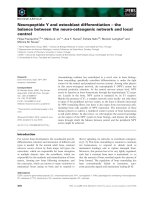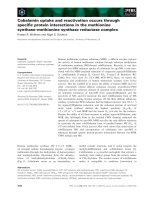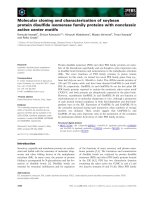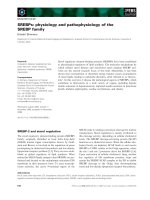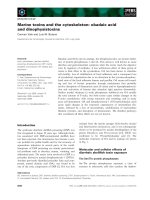Tài liệu Báo cáo khoa học: "WORD, PHRASE AND SENTENCE" pptx
Bạn đang xem bản rút gọn của tài liệu. Xem và tải ngay bản đầy đủ của tài liệu tại đây (60.75 KB, 2 trang )
WORD,
PHRASE AND SENTENCE
Kob't
F. Sinnnons
Univ. of Texas, Austin
Among the relative verities of natural language
processing are the facts that morphemes and words are
primary semantic units, and that their co-ocurrence in
phrases and sentences provides cues for selecting sense
meanings. In this session, two psycholinguistic
studies show some aspects of how human subjects process
words while reading. A study of medical vocabulary
shows that medical words are highly associated by
co-occurrance in medical definitions. Another report
shews the effectiveness of keyword identification and
selection of prominent sentences to organize abstracts
for retrieval.
A fifth study argues that analysis of existing natural
language dictionaries can be expected to contribute
importantly to what is needed for text understanding
programs. The final study is an experiment with a
sentence level translator applied to a large
German-English translation task. These two studies are
primarily concerned with analysis of language at the
sentence level.
The most glamourous areas of natural language research
are at levels above the sentence, concerned with
dialogues and discourse, frequently disdainful of
morphological or even grammatical analysis in their
search for effective structures for understanding what
the discourse is about. Scripts, frames, stereotypes,
schemas are all studied in these areas; and often
morphological and gra~natical analysis is bypassed in
favor of keyword scanning to extract some small
relevant portion of the text to be bound as values for
slots in these larger data forms.
This session reminds us that much can be accomplished
with vocabulary analysis, with keyword scanning and
statistical treatment of text and with semantic
analysis at the single sentence level. Yet, with
regard to most of the topics in this and other
sessions, there is a stronK sense of de~a vu; the
earliest natural language studies featured automatic
extracting and information retrieval based on
statistical, lexical and associational properties of
keywords. Mechanical translation of sentences without
regard for larger contexts marked the late sixties high
point of MT research amid contemporaneous studies of
the English dictionary and thesaurus. Competition
among sentence parsing algorithms is an ACL tradition
celebrated annually, while psycholinguistics has
traditionally applied chronometric studies, and
recordings of eye movements to measure this or that
aspect of human linguistic processing throughout the
period.
This is not to suggest that nothing new is happening;
actually, the continued emphasis on these topics
reveals that, though introduced early, they are still
imperfectly understood. Z believe science progresses
in spirals; initial studies are accomplished and
published supporting more advanced studies that build
upon the findings of the earlier work. Superstructures
of theory are constructed and more work is undertaken
in this framework. Finally the initial studies are
lost in years of accumulated literature, and perhaps
some of the wildest theories begin to collapse. Then
the field may suddenly show renewed interest in its
beginnings and
repeat
its early studies with the added
sophistication gained by experience. At this time the
line of history spirals past the points it reached on
earlier cycles. Hopefully, as in this session, the
experience gained between cycles insures an upward
progression rather than a profitless loop.
145




